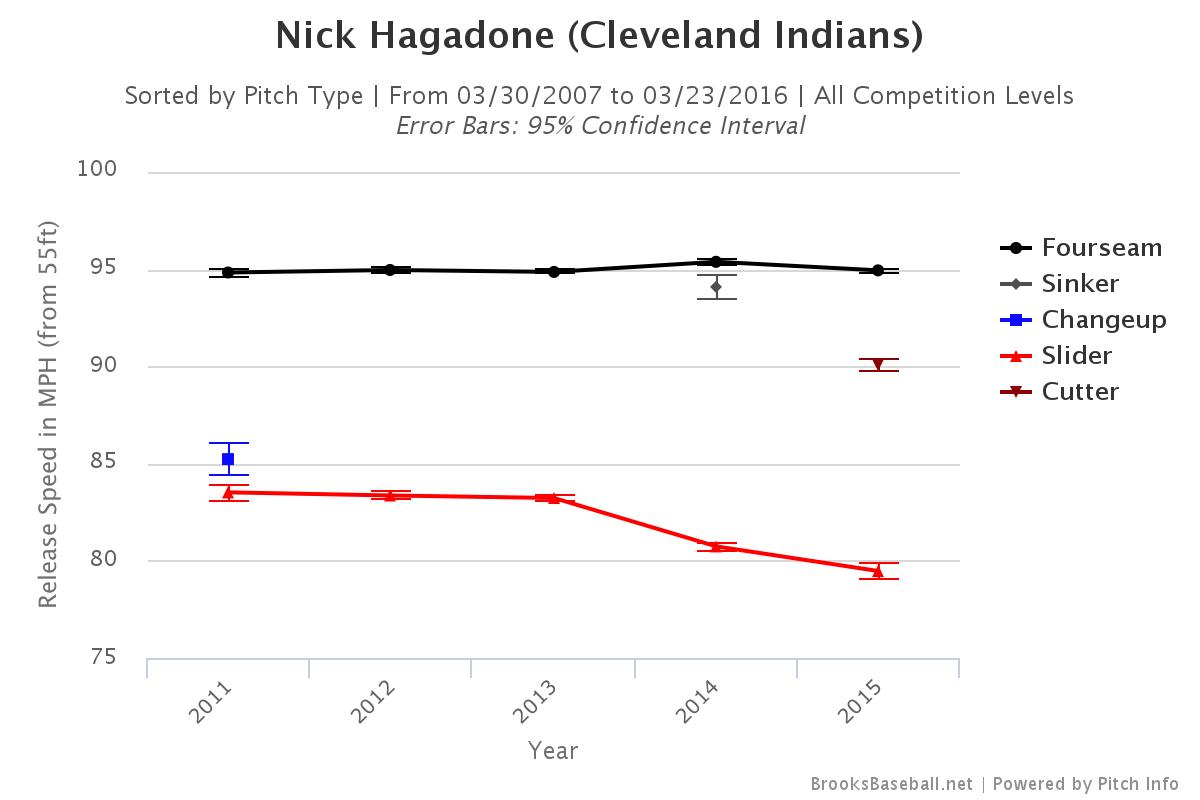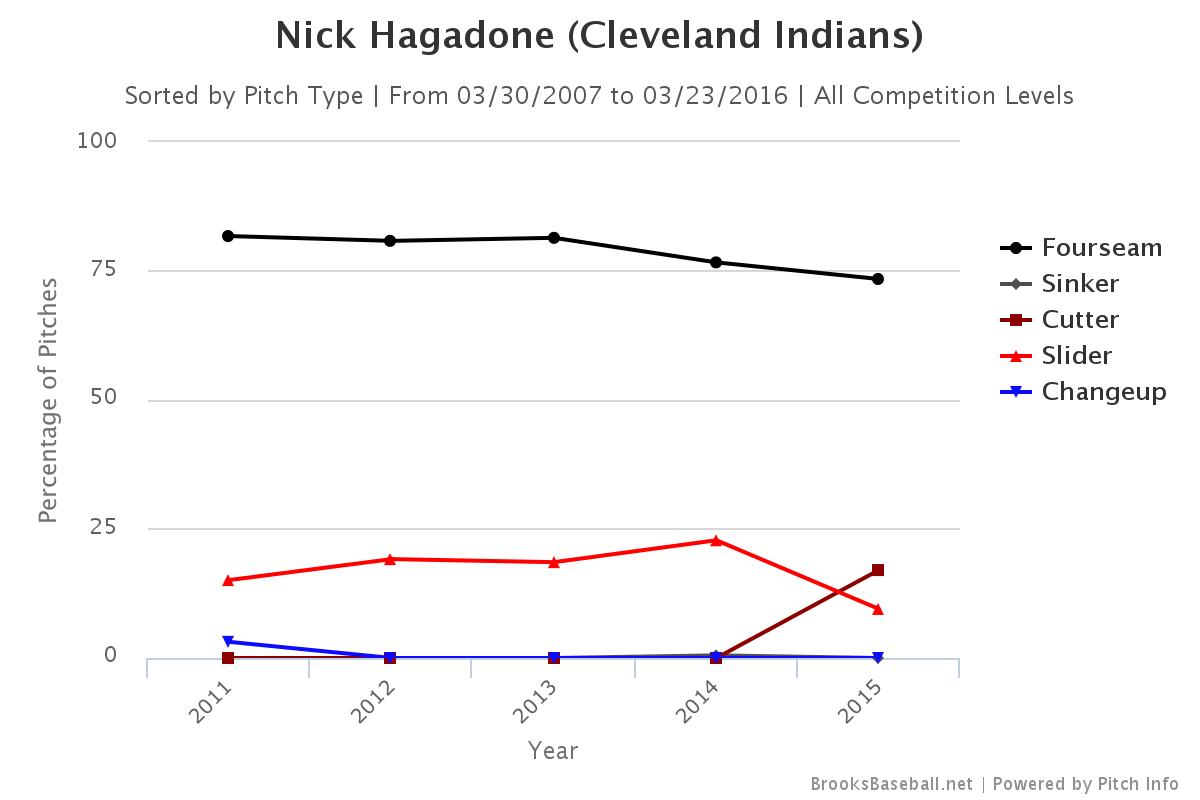The Brewers have brought in a boatload of starting pitching reinforcement as of late. Adrian Houser and Josh Hader came over in the Carlos Gomez trade; Zach Davies arrived in exchange for Gerardo Parra; and Jean Segura helped them acquire Chase Anderson. At the same time, the bullpen hasn’t really received many upgrades, probably because it performed so well in 2015. Will Smith should return, as should Jeremy Jeffress, Michael Blazek, and Corey Knebel; behind them, the likes of David Goforth will provide some depth.
One of the recent acquisitions who intrigues me the most happens to be a reliever. While left-handed pitcher Nick Hagadone doesn’t carry the pedigree of any of the aforementioned names, he’s succeeded recently — and how. In 2014, he posted a 2.70 ERA and 3.07 DRA, along with an 86 cFIP. Even over a mere 23.1 innings, those kinds of numbers will make a lot of relief pitchers jealous. How, then, did the Brewers manage to pick him up?
Well, his 2014 campaign really diverged from the others. For his career, Hagadone has an ERA of 4.72, a DRA of 4.07, and a cFIP of 103. It’s the classic flash in the pan — an otherwise-mediocre player explodes briefly, then regresses, then spends a lot of time trying to return to that peak. All Milwaukee can do is hope that Hagadone succeeds in that task.
On a basic level, Hagadone has one reliable pitch: a slider. It’s been worth 9.8 runs over his career, per FanGraphs, and it didn’t really get much better in 2014. The difference came on his four-seam fastball: A -4.5-run pitch overall, it broke even at 0.0 runs in 2014. And the greater success of the heater probably had something to do with its distinction from the slider:
When Hagadone broke out in 2014, he did so with a large slider-fastball velocity differential. It seems that the gap got too big for its own good last season, which sank both the slider (0.4 runs) and the fastball (-3.0 runs). Packing a little more heat back on his slider, to reach that sweet spot, could help him ascend once more.
The bigger factor, however, is pitch usage. Hagadone kept things pretty steady for the first four years of his career, but Year Five saw him swap out the slider for a cutter:
Hagadone discussed the change with Cleveland.com in May, explaining that he wanted another pitch “to keep [hitters] off-balance.” While his logic there appears sound — a three-pitch arsenal is generally better than a two-pitch arsenal — the results say differently. If Hagadone wants to avoid the struggles he endured in 2015, he might want to bring back the pitch mix that brought him prosperity in 2014.
With fixes this simple, why wouldn’t Hagadone make them? This analysis doesn’t take everything into account. For one thing, Hagadone faced really easy competition in 2014: The TAv for his opponents was just .252, compared to .259 for his career as a whole. There’s also the fact that hitters may have adjusted after he broke out, as they tend to do at the major-league level; perhaps his 2015 decline was inevitable. And the sample size-issue always pertains to cases like this — 23.1 innings does not a full season make. The velocity and pitch usage may only be ably to go so far.
Hagadone has some upside — he proved that in 2014. He still throws a superb slider, and his fastball brings the heat. He just hasn’t put it together convincingly yet, and at age 30, he doesn’t have much time left to do that. The Brewers are in a position to give him some reps this season, in Triple-A or the majors, so we’ll have to see what he accomplishes. The spark he had two years ago could come back, but the odds are that it won’t.



Brewers voided Hagadone’s deal in January: http://www.mlbtraderumors.com/2016/01/brewers-void-hagadone-phillies-sign-anthony-vasquez-athletics-matt-mcbride.html